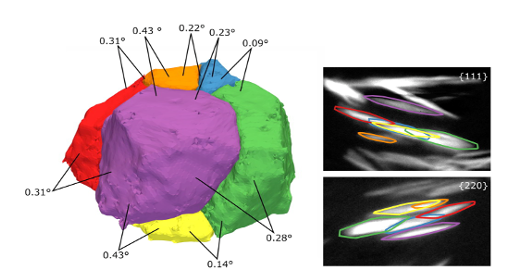
GrainMapper3D – a look under the hood
Have you ever wondered what actually goes on behind the scenes of GrainMapper3D? What kind of magic is used to turn spotty diffraction patterns into colourful grain maps? In a new Journal of Applied Crystallography publication we have detailed the fast and versatile reconstruction scheme at the very heart of GrainMapper3D. This exclusive look under the hood explains how high fidelity grain orientation and shape information is achieved in your own home lab.
In terms of speed, GrainMapper3D offers a significant reduction in reconstruction time as compared to indexing every voxel in the sample separately. This is achieved by exploiting the shapes of the diffraction spots to reconstruct the grain shapes, and letting the data drive the reconstruction of the illuminated sample volume.
Full 3D morphology and high angular resolution
Differentiating between sub-grains or clustered grains with low-angle grain boundaries is notoriously difficult by means of diffraction since the associated diffraction spots tend to overlap. The unique sensitivity of LabDCT and GrainMapper3D allows grain clusters with low-angle boundaries above approximately 0.05° to be distinguished. An example of such a cluster in an aluminum sample and the corresponding diffraction spots is provided in the figure above.
Journal of Applied Crystallography
3D Grain reconstruction from laboratory diffraction contrast tomography
